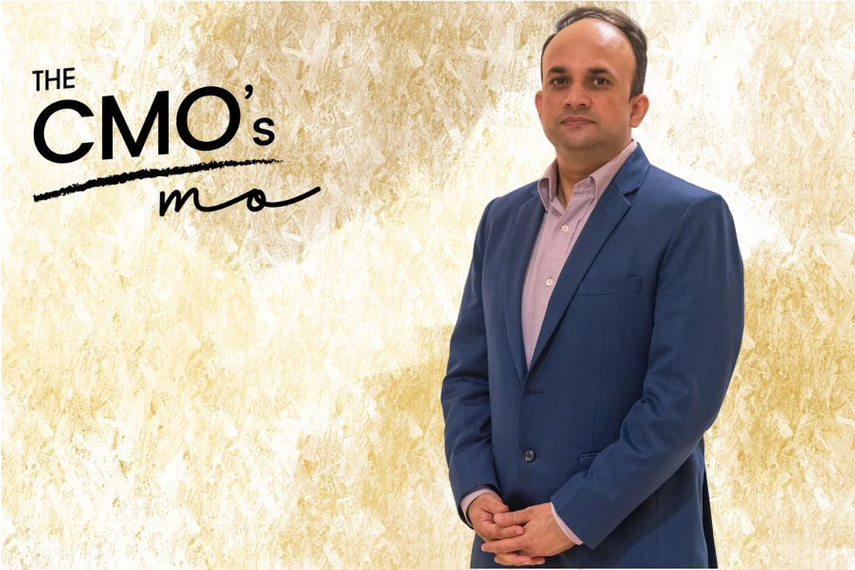
The CMO’s MO (modus operandi) highlights some of India’s eminent chief marketing officers as they share their marketing mantra, trends for the future, and what keeps them up at night. In a free-wheeling chat, the who’s who of the country’s leading marketers, keeping the tone conversational, and crisp and throw in questions that allow leaders to shine a light on their personalities, plans, and passions projects for the year ahead.
In this week's edition of CMO's MO, we have Vishal Sharma, the chief marketing officer of PSIPL, a facilities management company. He has over two decades of experience in marketing, business development, and sales spanning various companies like H&R Johnson, Schindler, and Otis Elevator Co.
His areas of expertise include project management, market research, customer retention, revenue generation, risk management, and financial planning. He tells Campaign what keeps his ticking in this dynamic industry:
What are the three biggest marketing challenges for PSIPL right now?
The scale and nature of our business come with its fair share of marketing challenges. With around 20,000 employees, creating a cohesive marketing plan that engages this diverse workforce in one single thread is a key challenge. The same goes for the campaigns deployed at client sites. The diverse segments, regional cultures, and geographical locations make it challenging to create a standardised marketing and branding campaign.
As a B2B service industry player, LinkedIn is the only relevant social media platform for us. The catch is that LinkedIn does not offer any ROI on lead generation. Currently, integrated facility management (IFM) is not a separate category online. Google clubs it under manpower services. This lack of segmentation presents a challenge for us to fully leverage SEO and other online marketing tools.
Mainstream marketing is mainly B2C dominated. As a B2B brand, we have fewer marketing avenues, which requires us to explore creative ways to connect with our target audience.
Where are you investing your marketing budgets this year? In what areas are you increasing or cutting spend?
This year, we are investing in creating engaging content to be hosted on our website and LinkedIn page, including a budget to boost this content on other digital platforms. We are allocating funds for multiple email campaigns focussed on business generation, wherein we launch a lead generation campaign to reach potential clients across several diverse industry segments and geographies.
Any off-beat events other than those covering the IFM landscape are areas where we are increasing our spending. These investments are aimed towards building a brand which is aligned with the client’s business goals like ESG, cost optimisation, employee retention, and business scale-up.
Which industry topic doesn’t get talked about enough?
The IFM industry faces three main challenges right now. One is the shrinking talent pool for brown and white collared jobs. Existing front-line staff are finding delivery jobs more attractive than working in facility management. Secondly, in addition to the dearth of candidates, the ones who are working in the IFM industry are facing a shortage of learning and development opportunities at the industry level.
Finally, another important hurdle is the inadequate representation of the IFM industry in government forums, because of which the industry often gets overlooked in development policies and schemes. While these challenges create obstacles, they also indicate an opportunity for the entire sector to unite, solve, and grow together.
How PSIPL is walking the sustainability talk?
PSIPL is transparent in sharing its sustainability efforts and outputs. All the numbers reported in the media are real data based on actual savings delivered for all aspects of ESG. All our case studies, client speak, audio-visual content, stakeholder communications, and marketing collaterals are backed by validated data.
To ensure an IFM provider is honouring its delivery commitments, we came up with detailed service level agreements (SLAs) which are based on real data validated by an independent audit and quality assurance programme. So, transparency and third-party verification should help people assess how we fulfil our sustainability goals.
What needs to change in the IFM industry about its work culture?
This industry needs to make a genuine effort and intent to seek talent from non-IFM backgrounds. This not only offers an alternative perspective but also creates a valuable diverse cultural confluence. Secondly, organisations need to focus on training and upskilling employees, while facilitating their career and financial growth.
What is the best professional advice you ever received?
I have accumulated a library of advice received over the course of my career. The one I follow often is, ‘It does not matter what we say or do, all that matters is how we make others feel’. This is true for brands and people both. As a brand or a professional, how you make your customer, team member, or vendor feel is all that matters.
Another powerful insight I live by is that ‘people do not look for products or services, they look for solutions to their problems’. This mindset helps me drive success by designing relevant value propositions for various groups.
How would you describe yourself as a CMO?
Rather than myself, I would like my actions to define me. As a CMO, I make it a point to know my business inside out. I ensure I stay updated and on top of all the things. I believe there is no one single right way. But there is always a scope to do things in a better way. Keep exploring, keep learning is my mantra.
I think of marketing as an act of art which one never finishes, and always abandons. Also, creative work related to the brand is not a timeline-based activity. I ensure all our work is quantifiable and guide it to always deliver tangible results.
Tell us one personal thing about yourself that others might not know.
Out of the multiple things people might not know about me, I would like to share the secret behind my success— my insecurity of getting replaced. Capitalising on this unfavourable feeling, I use it to keep myself on my toes and drive myself to continually give my best. It also powers my attention to detail and my obsession for a thorough review, helping me to reflect on my daily actions and improve regularly. I share this fact because I think we should normalise talking about our vulnerabilities and address the concerns around mental health.
Name a brand whose customer experience you admire.
I admire several brands. For one, I find the World Economic Forum’s content to be highly insightful and inspiring, especially their pieces on the topic of sustainability. I also admire Apple’s style of communicating; their messaging is clear, crisp, and uncluttered.
What keeps you up at night as a CMO?
There is a plethora of things constantly running in my mind. I always think about what more we can do in the IFM business and how we can leverage marketing as a tool for greater causes. The last piece of content could have been better—this thought surely has a permanent residence in my mind.
As a marketing professional, I am always thinking of ways to create a 100% inbound lead model for new enquiries. One of my favourite indulgences is wondering about the amazing outcome that can be achieved if we collaborate with our clients for a joint marketing exercise. But lately, I have been learning how not to worry much, so I regularly remind myself to give my best and leave the rest.


.jpg&h=268&w=401&q=100&v=20250320&c=1)
.jpg&h=268&w=401&q=100&v=20250320&c=1)


.png&h=268&w=401&q=100&v=20250320&c=1)



